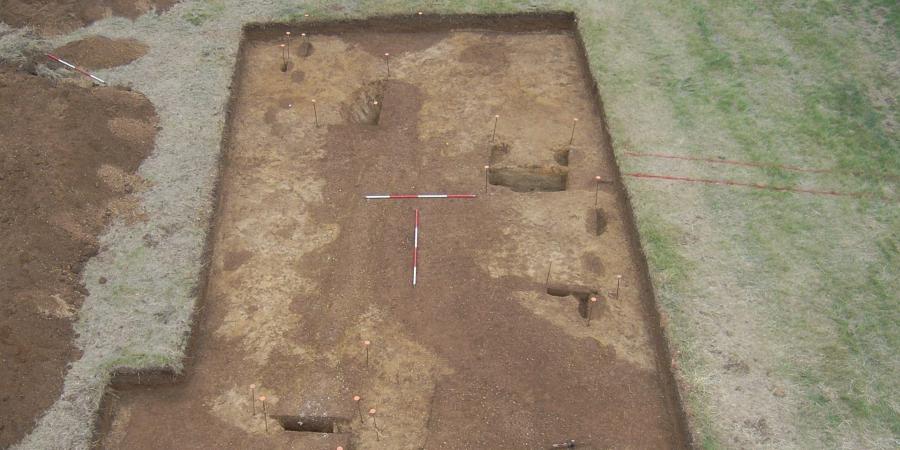Broadcast 9 May 2010
The site at Sutton Courtenay in Oxfordshire lies within an area rich in the traces of prehistoric and Anglo-Saxon activity. Extensive prehistoric and Anglo-Saxon remains are known from the near vicinity. Part of the Drayton Cursus (Neolithic) runs through the site, and there are a number of Bronze Age ring ditches and enclosures in the area. Previous archaeological work has revealed Anglo-Saxon settlement remains, including both sunken feature buildings (SFBs) and timber-built halls. Sutton Courtenay may have been a vill (royal administrative centre) at this time.
Time Team aimed to investigate both prehistoric and Anglo-Saxon features, and the relationship between the two. Were the Anglo-Saxon inhabitants of Sutton Courtenay aware of the prehistoric remains, and had they sited their dwellings here deliberately? Aerial photographs and geophysical data confirmed a picture of a densely occupied landscape, although it was not always clear which features belonged to which period.
Four trenches located part of a prehistoric ring ditch and three Anglo-Saxon buildings, two rectangular timber-built halls and one SFB. The foundations of the larger of the two timber halls had been cut through the fill of the prehistoric ring ditch, perhaps deliberately sited to do so, while those of the smaller hall cut through the SFB. In other words, there had been more than one phase of Anglo-Saxon occupation on the site.
Perhaps disappointingly, finds from the site, either of prehistoric or Anglo-Saxon date, were not plentiful, and the precise dating of these features remains slightly uncertain. The ring ditch is presumed to be of Middle Bronze Age date, while the SFB dates to the early Anglo-Saxon period (5th to 7th century), and the halls slightly later.
